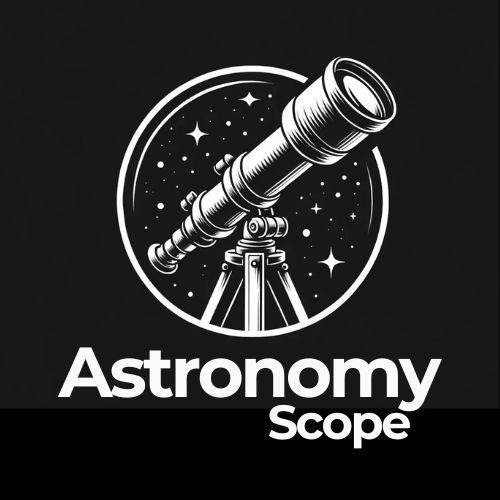If you’re in the market for a new telescope, you will likely come across two different telescope designs: Newtonian’s and Cassegrains.
But what do these terms mean, exactly? How do the two designs differ?
Which design is the better fit for your needs?
Well today, I’m going to break down the key features and differences between Newtonian’s and Cassegrains and help clear up any questions that you may have.
What Is A Newtonian Telescope?
A Newtonian telescope is a type of reflecting telescope invented by Sir Isaac Newton. It uses a concave primary mirror to gather and focus light, and a flat secondary mirror to reflect the light to an eyepiece on the side of the tube.
Visually, Newtonian telescopes typically have a cylindrical or tubular shape.
At one end, you’ll find the primary, large parabolic mirror.
Midway up the tube, a small flat secondary mirror is angled at 45 degrees to redirect the light to the side of the tube.
An eyepiece or viewer is situated on the side of the tube where this reflected light exits.
The telescope often rests on a mount, which can vary from simple altazimuth designs to more complex equatorial mounts.
The open end of the tube, opposite the primary mirror, is where the telescope gathers light from the observed object.
There are several sub-designs of Newtonian telescopes, with the two most common being Schmidt–Newtonian and Maksutov–Newtonian Telescope.
What Is A Cassegrain Telescope?
A Cassegrain telescope is a type of reflecting telescope with a concave primary mirror and a convex secondary mirror. The design redirects light back through a central hole in the primary mirror to an eyepiece. Noted for its compact form, it offers a long focal length in a short tube.
Cassegrain telescopes are compact and tubular, featuring a primary mirror at the tube’s end and a secondary mirror reflecting light back to it.
The primary has a hole directing light to the rear eyepiece.
Again, there are several sub-designs of Cassegrain telescopes, with the most common being the Schmidt–Cassegrain.
What Are The Differences Between A Newtonian vs Cassegrain Telescope
Optical Path
- Newtonian: Has a parabolic primary mirror at the back of the tube. A flat secondary mirror reflects light out to the side of the tube to the eyepiece.
- Cassegrain: Uses a parabolic primary mirror and a hyperbolic secondary mirror. The secondary mirror reflects light back towards the primary, which has a hole in its center. Light exits through this hole to the eyepiece located at the back of the telescope.
Tube Length
- Newtonian: Generally longer due to the straightforward path of light from the primary mirror to the side-mounted eyepiece.
- Cassegrain: More compact because the optical path folds within the tube, allowing for a shorter overall length.
Eyepiece Location
- Newtonian: Eyepiece is on the side of the telescope tube, roughly near the top.
- Cassegrain: Eyepiece is located at the bottom rear of the telescope, behind the primary mirror.
Portability
- Newtonian: Tends to be bulkier and less portable, especially for larger apertures.
- Cassegrain: More compact design makes it easier to transport and set up.
Secondary Mirror Size
- Newtonian: Typically has a smaller secondary mirror, which can mean less obstruction and potentially higher contrast.
- Cassegrain: Often has a larger secondary mirror, leading to a greater central obstruction which might reduce contrast.
Versatility & Uses
- Newtonian: Favoured by many amateur astronomers for its simplicity and cost-effectiveness. Great for deep-sky observations.
- Cassegrain: Its compact design makes it more versatile. It’s commonly used in both amateur and professional settings, including terrestrial observations and astrophotography.
Collimation Sensitivity
- Newtonian: Somewhat more forgiving in terms of collimation (alignment of optics) compared to some Cassegrain designs.
- Cassegrain: Can be more sensitive to misalignment, especially in designs like the Ritchey–Chrétien.
Variants
- Newtonian: While there can be slight variations in design, the Newtonian setup is fairly standard.
- Cassegrain: There are several variants like the Classical Cassegrain, Schmidt-Cassegrain, and Ritchey–Chrétien, each having unique optical characteristics.
Who Are Newtonian Telescopes Best For?
Newtonian telescopes are best for amateur astronomers seeking a cost-effective solution with good optical performance. They offer a wide field of view, making them ideal for observing deep-sky objects like nebulae, star clusters, and galaxies.
Their straightforward design minimizes optical aberrations.
However, their side-mounted eyepiece may not be ideal for everyone, especially those with mobility issues.
Due to their size and collimation needs, they are suited for enthusiasts willing to invest time in setup and maintenance for high-quality, wide-field astronomical observations.
Who Are Cassegrains Best For?
Cassegrain telescopes stand out for their compactness, versatility, and low maintenance, especially when compared to Newtonian reflectors. Their folded optical design makes them ideal for travelers and those with limited storage.
They excel in both planetary and deep-sky observation, and their often paired computerized mounts simplify object location for beginners.
Many Cassegrains are adept at astrophotography, offering detailed planetary views, while Newtonians might be preferred for wider deep-sky shots.
Though Newtonians can be more cost-effective, offering a larger aperture for the price, Cassegrains provide a balance of observational and astrophotographic capabilities, with the added potential for terrestrial viewing.
Related Guides:
- Dobsonian vs Cassegrain [Difference Between the Telescopes]
- Dobsonian vs Reflector [Difference Between the Telescopes]
- Dobsonian vs Newtonian [Why and How Are They Different]

Hey, my name is Jeremy. I’m a passionate and seasoned astronomer who loves nothing more than observing the night sky. I also love researching, learning, and writing all things Space and the Universe. I created Astronomy Scope to share my knowledge, experience, suggestions, and recommendations of what I have learned along the way while helping anyone to get into and maximize their enjoyment of the hobby.

